Fear Isn’t Keeping Them Out, It’s Indifference (Why Campus Attendance Has Plummeted)
It’s an almost universal phenomenon.
Whether you barely closed in-person learning for the pandemic, campus leaders are facing the same reality: A raft of learners aren’t coming back to your campuses. In-person, that is.
The question is, why?
The answer has puzzled me for a while now. It got harder to answer because even formerly growing campus sites are facing the same challenges. After shutting down to in-person gatherings for even a few months, 20-30% of their students disappeared. In fact, of the 2.6 million students who started college in fall 2019, 26.1 percent, or roughly 679,000, didn’t come back the next year, according to the National Student Clearinghouse Research Center.
I know of a few schools that have surged past their pre-COVID attendance numbers. But for every campus that has seen that favor, there are 100 that haven’t.
What’s going on?
At first, we surmised that it was the lack of a vaccine that created the lag. Nope.
Then it was the variants, but even relief from Delta and now Omicron still hasn’t led to a surge that erases the loss.
Then we wondered if people were just generally fearful.
Nix that theory too. Many people who can’t find their way back to in-person learning have no trouble finding their way to Target, an NBA game, dinner out, a tropical vacation, family reunions, or a Foo Fighters concert.
What gives?
The Emotion Isn’t Fear…It’s Indifference
So, this is a theory here (I’m not a social researcher or psychologist), but I offer it in the hope that it’s helpful. After all, you can’t battle a force you don’t understand and can’t name.
What I’m picking up from my hard conversations with campus executives who have opened their experience management channels is the fact that the exodus isn’t driven by fear…it’s indifference.
Their students know where their local campus is. They didn’t forget. They have been poked and lured enough by your array of free re-engagement events available to them.
After the disruption that happened during COVID, they simply grew indifferent to in-person learning.
Indifference is defined as a lack of interest, concern, sympathy, or unimportance.
They don’t hate in-person learning; there’s just no surge of strong emotions. It’s simply not as important.
It’s like they’ve assessed their life, reconsidered what matters most, and decided that attending traditional school just wasn’t that important in the end.
Which is discouraging, I know.
But hang on, there’s a lesson here for all of us.
You might be thinking to yourself exactly what a district leader expressed to me in our conversation last week. She said, “well Joe, you don’t read my inbox and you’re not in my conversations. People hated what I did or didn’t do about politics, racial justice, masks, vaccines, or politics and they left mad. Flippin' mad.”
For sure all those things are factors. But I’m not sure it explains a decline as massive as what we’re seeing.
Regarding the people who left your system because they were angry at you, you likely have them seared into your memory not because they’re a large group of people, but because they were a loud group of people.
Loud does not equal large.
And it’s probably not nearly half as large a population as you are imagining. There’s something deeper going on here.
Another recurrent line many campus leaders have echoed lately is that public education (K-12 and Higher Ed) is the subject of a lot of scorn.
When you study what’s happening in the rest of the world or throughout history, what’s happening in the West is hardly coercion. A loss of privilege is not coercion.
Do some people have an axe to grind with their local schools? Sure…and sometimes with good reason. Just witness the rise of unconventional educational alternatives.
But that’s likely still a small minority of the people who disappeared from your campus during the pandemic, despite what you read in the comment section on the Internet.
Double click on that and you’ll see that while the online world can be a hostile place, the real world is a lot less polarized.
While that may come as a shock, recent research suggests that the online world distorts how divided we are. In other words, if you talk to most people, they’re somewhere in the middle.
And when it comes to people who stopped attending your in-person learning, they don’t despise your system. They just don’t think about it much.
Just because ten people wrote you nasty emails doesn’t mean that everyone left because they dislike you or your system.
Many People Didn’t Really Leave Your System. They Just Stopped Coming.
So, if it is indifference, what’s going on?
Here’s the strangest part.
If you talk to a lot of people who no longer attend in-person learning and are currently occasional online participants, they’ll tell you they’re still a part of your learning community.
Dissect that a little further and here’s what you’ll probably find. Most people didn’t leave. They just stopped coming.
I know that makes no logical sense, but maybe that’s how they see it.
That’s what indifference does—you stop coming, but you never really think of yourself as having left.
It’s the friendship that gradually drifts into ‘yeah, that’s right, we used to hang out all the time, but I guess not anymore.’ You’re not enemies by any stretch. You just drifted apart.
Weird, isn’t it?
But that’s indifference.
People Grow Indifferent When They Don’t See Value
Indifference works like this: You become indifferent to people and things when you no longer see value in them.
It’s just not significant enough for you to carve out time for it anymore.
If this is indeed what’s happening with campus attendance, the verdict is as sobering as it is disappointing.
People didn’t see value in on-campus attendance, so, with the catalyst of a few months or longer off, they dropped it.
It’s easy to push back and argue that people should see their education as something that adds significant value. That’s true. Except we’re not talking about learning as much as we are about face-to-face learning.
Maybe your people haven’t bailed on the principle or the idea of education merely as much as they’ve left the current expression of learning.
So, what do you do about that?
The Antidote to Indifference is Passion
The hardest part about indifference is that it engenders neither love nor hate.
It’s more like a shrug that grows into obliviousness. There’s just not a strong well of emotions when it comes to indifference.
The antidote to indifference, then, is passion.
You are never indifferent to things you’re passionate about.
And this is where some further hard news kicks in and ultimately some great news.
First, the hard news, then some much better news.
What Are You (Honestly) Passionate About? People Coming To Your Actual Classroom…Or The Mission Of Your System?
This is a moment when it’s critical for leaders to get honest with themselves.
Your misdirected passion as a campus leader can misdirect your team and organization’s passion.
As goes the leader, so goes the team.
To that end, if you started to explore the dark underbelly of why campus superintendents and presidents want to get everyone back in their classrooms, you might discover that these leaders:
- Don’t like seeing empty rooms
- Want to see their parking lots full
- Rave about campus life and the traditions found on their campuses
I know that’s a superficial assessment, and your motives are far more nuanced than that, but as a district and campus leader for several decades, I get the emotion here.
Perhaps the key to the future isn’t to just create all the sights, sounds, and “good feels” that we have all come to treasure.
Maybe it’s less about getting excited about pressing “re-set” and being more excited about the mission and what all this mess now makes possible.
Here is another sobering fact that campus leaders must face as the future arrives. Are you ready for this?
The mission of the system gets accomplished as well or better outside the campus walls than it does inside them.
As a result, heading into a hybrid, digital, decentralized future, maybe it’s time to start thinking beyond the building.
Start Thinking Beyond Your Buildings
Historically, the whole system of education has wagered almost everything on gathering people in buildings.
Buildings will be around for decades to come, and I believe it is great when people gather together.
But if your system is going to realize its full mission, your campus buildings will have to stop being the epicenter of your mission.
In the future, if preparing for a prosperous society means coming to your campus, in a set building, with a set faculty member, at a set hour, you need a new strategy.
The easiest way to think about this is the same way instructional leaders have thought about study groups for the last 25 years.
No campus leader today feels threatened by the idea that thousands of learners will be meeting in their homes, coffee shops, or other community places to connect with other learners. The system does spur learning without it actually happening in a centralized facility.
This is where the potential for a distributed learning model starts to move in a new direction.
Many people who are indifferent about driving to your buildings (perhaps) aren’t indifferent to your mission. Leaders who are willing to go to them will be far more effective (and profitable) than leaders who continue to expect people to come to them.
The good news is that decentralized learning scales in a way that centralized education doesn’t. It costs less and can produce far more.
A Renewed Mission and a Brighter Future
It stinks to realize you’re battling indifference and so are your colleagues. And it’s not fun to have your ideals and biases challenged...But I'm not sorry.
I know from experience that as my ideals become exposed and my insecurities get unmasked, I become a better leader.
So, if the best way to battle indifference is to fuel someone’s passion level, perhaps one path forward is to get people more passionate about the MISSION of your campus than the tactical METHODS of delivery.
If your only winning method is having everyone attending class on-site and this strategy is bringing diminishing enrollment returns year after year, perhaps refocusing on the overall mission of the campus is a better direction.
The mission of your system can be accomplished in your buildings, in their homes, in workplaces, in your community, and literally across the globe.
Moving from a system that defaults to in-person learning to a campus that connects and equips learning anytime and anywhere can renew a community passion that might be flickering out. And in the process, it might renew yours as well.
Sometimes the best way to solve a problem is to name the problem. I hope this helps name a problem and perhaps point the way toward a solution.
Leading Your Mission Forward Can Feel Like A Mystery. It Doesn’t Have To.
Leading your organization forward can feel like a mystery. Although every growing system experiences growing pains, being equipped to respond to those challenges – structurally and culturally – is what sets apart a thriving mission from one that’s stuck and hoping for more relief.
P.S. Whenever you are ready here are the 2 best ways I can help you:
1) Get your FREE guide: 5 Evidence-Based Practices to Reclaim More Team Engagement with Less Effort: www.higherperformancegroup.com/reclaim
2) Schedule a Call. Let’s talk about the obstacles (and opportunities) that you & your team are currently facing. www.higherperformancegroup.com/schedule
More Blog Articles



